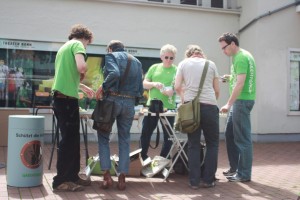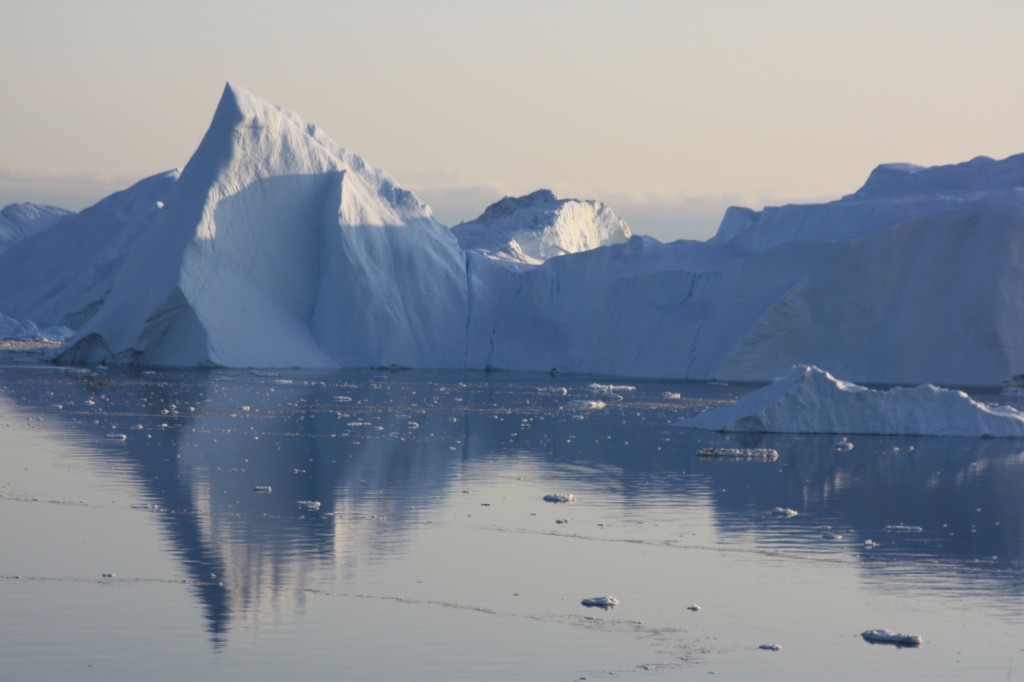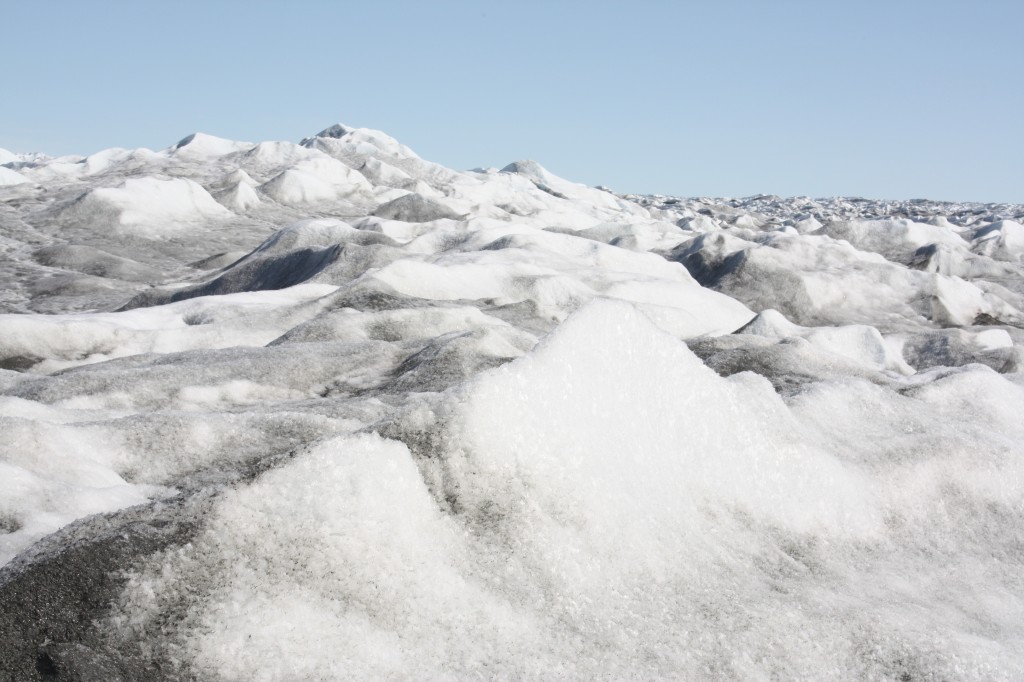Greenpeace criticizes draft Arctic oil spill response agreement

The symbol of an intact Arctic: A polar bear puts in an appearance on a poster at a Greenpeace “Save the Arctic” stand in Germany.
The Arctic Council environment ministers will be meeting in Jukkasjärvi in Sweden over the next few days. One of the items on the agenda is a long-awaited agreement on dealing with oil accidents in the Arctic. A copy of the document has been leaked, and Greenpeace says it is “vague and inadequate”. “Marine Oil Pollution Preparedness and Response in the Arctic” is the title of the paper, set to be adopted by the Council’s foreign ministers at their meeting in May. An oil spill in the Arctic would be very hard to tackle for various reasons, including remoteness, cold, ice, darkness and the fact that oil takes longer to break up in cold conditions. Remember the Exxon Valdez? If you are young enough not to, it was a tanker that went down in Prince William Sound in 1989, with devastating effects on the environment.. I visited the spot a couple of years ago, and there are still clumps of oil under stones on the beaches. And of course Shell is having its own problems with Arctic drilling at the moment.
Greenpeace is running an international campaign against oil drilling in the Arctic. Ben Ayliffe, head of the campaign, told the media: “This draft agreement does not inspire confidence in the ability of the Arctic Council to protect this fragile region when the worst happens. It’s incredibly vague, it fails to hold oil companies liable for the impact of their mistakes, and there is nothing here that ensures adequate capacity to deal with a spill in these nations”
I have been talking to a lot of experts on this over the last few years and most of them are convinced that a spill would happen sooner or later and would be extremely difficult to deal with. The risks to the fragile Arctic ecosystem would be enormous.
Climate change in pictures
Gary Braasch is a photographer who decided some time ago to devote the rest of his working life to documenting the effects of climate change in pictures. I met him on a plane on the way to a conservation summit some time ago, when he was presenting a new photography book. Faithful ice blog watchers may remember the story. One of the pictures was a polar bear on land – I was immediately reminded of a story by George Divoky, ornithologist and climate observer. George monitors black guillemots on Cooper Island, off Barrow, Alaska. He has observed considerable change in the climate in recent years, and has had to take all kinds of measures to protect the birds against hungry bears. He had also told me about an encounter he and a visitor had had with a bear. It turned out the photo and George’s story were one and the same event.
Now I have discovered Gary’s website World View of Global Warming, which is well worth a look. George’s Cooper Island site also has some spectacular pictures.
Is wildfire smoke helping to melt the Greenland ice sheet?
I have come across an interesting story from the University of Ohio State saying satellite observations have revealed the first direct evidence that smoke from wildfires in other parts of the Arctic is drifting over the Greenland ice sheet, polluting it with soot which makes it more likely to melt in the sun.
![]() read more
read more
Stop flying over the North Pole! (Exception: Reindeer-drawn sleighs)

Greenland melt stream photographed by Ian Joughin, a glaciologist in the University of Washington’s Applied Physics Laboratory
I have written a lot about the melting Arctic ice on the Ice Blog. This spectacular photo shows a channel carved into the Greenland ice sheet by melt water. It was taken by Ian Joughlin from the University of Washington, co-author of the study on melting polar ice (see Ice Blog post from 30.11.12) and lead author of an article on factors that cause ice sheets to lose mass. It goes without saying (almost) that we need to reduce emissions to halt the process. (Come on Doha negotiators). A new study has come up with an additional suggestion. Atmospheric scientist Mark Jacobsen and his colleagues suggest airlines could help slow Arctic melting by stopping international flights from crossing over the Arctic circle.
![]() read more
read more
The Cold Edge – Visualizing polar climate impacts

The Dragon - Dave Walsh - davewalshphoto.com
On board the Greenpeace boat Esperanza at Svalbard for a story on scientists monitoring ocean acidification in 2010, I met Dave Walsh from Ireland, who was on board as Greenpeace press officer. Since then I have discovered his work as a photographer in his own right. These photos are art and appeals for environmental and climate action at the same time. Ice blog followers will enjoy his polar photos, spectacular and somehow moving. “While the frozen regions of our planet have the power to ignite imaginations, for most of the seven billion people on Earth, the Arctic and Antarctic remain abstract and unreachable”, says Dave. “ I’ve been lucky enough to voyage north and south by ship, to experience the serenity of the oceans and polar regions – and realise how finite ourplanet is.”
“The Cold Edge” exhibition of Dave’s pictures opens at The Copper House Gallery in Dublin this evening. I wish I could be there. In the meantime, those of us who can’t be there in person can share some inspiration and (aesthetic) food for thought online. The British newspaper the Guardian also features the pictures.























Feedback